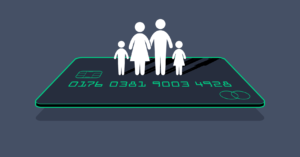1. Cryptocurrency: A digital or virtual form of currency that uses cryptography for secure financial transactions, control the creation of new units, and verify the transfer of assets.
2. Blockchain: A decentralized digital ledger that records transactions across multiple computers, ensuring transparency, security, and immutability.
3. Bitcoin: The first and most well-known cryptocurrency, created by an anonymous person or group known as Satoshi Nakamoto.
4. Ethereum: A decentralized blockchain platform that enables the creation and execution of smart contracts and decentralized applications (dApps).
5. Altcoin: Any cryptocurrency other than Bitcoin, often used to refer to alternative cryptocurrencies.
6. Wallet: A digital tool or software that allows users to securely store, send, and receive cryptocurrencies.
7. Private Key: A secret code or number that grants access to a user’s cryptocurrency holdings and is essential for making transactions.
8. Public Key: A cryptographic code associated with a cryptocurrency wallet that allows others to send funds to that wallet.
9. Decentralization: The distribution of authority and control over a network or system among multiple participants, reducing the reliance on a central authority.
10. Smart Contract: Self-executing contracts with predefined rules and conditions written in code, automatically executing actions when the conditions are met.
11. ICO (Initial Coin Offering): A fundraising method in which new cryptocurrencies are sold to investors before they are listed on exchanges.
12. Token: A unit of value issued by a project or organization on a blockchain, representing ownership, utility, or access rights.
13. Mining: The process of validating and adding new transactions to a blockchain through computational power, often associated with proof-of-work consensus mechanisms.
14. Proof-of-Stake (PoS): A consensus mechanism in which a person’s ownership (stake) of cryptocurrency determines their ability to mine or validate transactions.
15. DeFi (Decentralized Finance): A system of financial applications built on decentralized blockchain networks, aiming to provide open and permissionless access to financial services.
16. DApp (Decentralized Application): An application that operates on a decentralized network, typically a blockchain, without the need for intermediaries or central control.
17. Exchange: A platform where cryptocurrencies can be bought, sold, and traded with other digital assets or fiat currencies.
18. Fiat Currency: Government-issued currency that is not backed by a physical commodity but rather by the trust and confidence of the people.
19. Market Cap: The total value of a cryptocurrency, calculated by multiplying the circulating supply by the current market price.
20. ICO (Initial DEX Offering): Similar to an ICO, but the token sale takes place directly on a decentralized exchange (DEX).
21. Whale: A term used to describe individuals or entities that hold a significant amount of a particular cryptocurrency.
22. HODL: A slang term derived from a misspelling of “hold,” indicating a long-term strategy of holding onto cryptocurrencies despite market fluctuations.
23. FOMO (Fear of Missing Out): The fear that drives individuals to make impulsive decisions, such as buying or selling cryptocurrencies, due to the fear of missing out on potential gains.
24. FUD (Fear, Uncertainty, and Doubt): The spread of negative or misleading information about a particular cryptocurrency or the market in general, often with the intention of causing panic selling.
25. Stablecoin: A type of cryptocurrency designed to have a stable value, usually pegged to a fiat currency or a basket of assets.
26. Gas: The unit of measurement for computational effort required to process transactions or execute smart contracts on the Ethereum blockchain.
27. Hashrate: The measurement of computational power used in cryptocurrency mining, indicating the speed at which a miner can solve complex mathematical problems.
28. Peer-to-Peer (P2P): A decentralized network architecture where participants interact directly with each other without intermediaries. In the context of cryptocurrencies, P2P refers to the direct transfer of digital assets between users without the need for a central authority.
29. Address: A unique identifier used to receive or send cryptocurrencies, similar to a bank account number.
30. Cold Wallet: A cryptocurrency wallet that is not connected to the internet, providing enhanced security against hacking or online threats.
31. Hot Wallet: A cryptocurrency wallet that is connected to the internet, allowing for easier access and convenience but with increased vulnerability to hacking.
32. Fork: A significant change or split in a blockchain network, resulting in two separate chains with different protocols or rules.
33. Hard Fork: A type of fork that is not backward-compatible, resulting in a permanent divergence from the original blockchain.
34. Soft Fork: A type of fork that is backward-compatible, allowing nodes that haven’t upgraded to still recognize the new blockchain.
35. Gas Fee: The fee paid by users to compensate miners for validating and processing their transactions on the blockchain.
36. Whitepaper: A document outlining the concept, technology, and potential of a cryptocurrency project, often published before an initial coin offering (ICO) or token sale.
37. Liquidity: The ease with which an asset, such as a cryptocurrency, can be bought or sold without significantly impacting its price.
38. Market Order: A type of order to buy or sell a cryptocurrency at the best available price in the market.
39. Limit Order: A type of order to buy or sell a cryptocurrency at a specific price or better.
40. Candlestick Chart: A graphical representation of price movements in a specified time period, commonly used for technical analysis in trading.
41. Pump and Dump: A manipulative scheme in which individuals artificially inflate the price of a cryptocurrency, often followed by a rapid sell-off to make quick profits.
42. Whale Alert: Notifications or alerts that inform users about significant cryptocurrency transactions, particularly those involving large amounts.
43. Wallet Backup: A copy or backup of the private keys or recovery phrase for a cryptocurrency wallet, used to restore access to funds in case of loss or theft.
44. KYC (Know Your Customer): The process of verifying the identity of users to prevent fraud, money laundering, and other illegal activities.
45. Airdrop: The distribution of free tokens or cryptocurrencies to a specific group of users as a promotional or reward mechanism.
46. Pumpamentals: The combination of pumping (raising) the price of a cryptocurrency and emphasizing its fundamental value or potential to attract investors.
47. Sharding: A technique used in blockchain scalability solutions to divide the network into smaller partitions called shards, allowing for parallel processing of transactions.
48. DAO (Decentralized Autonomous Organization): An organization governed by smart contracts and operated by its participants, without a central authority or intermediaries.
49. Scaling: The process of improving a blockchain’s capacity to handle a higher number of transactions per second, addressing limitations in scalability.
50. Permissioned Blockchain: A blockchain network that restricts access and participation to specific entities or individuals, often used in enterprise or government settings.
51. Proof of Stake (PoS): A consensus mechanism in blockchain networks where validators are chosen to create new blocks and validate transactions based on the number of coins they hold and “stake” in the network.
52. Proof of Work (PoW): A consensus mechanism used in many cryptocurrencies, including Bitcoin, where miners compete to solve complex mathematical problems to validate transactions and create new blocks.
53. Smart Contract: Self-executing contracts with predefined rules and conditions that are automatically enforced on the blockchain. Smart contracts enable trustless and transparent execution of agreements without intermediaries.
54. Tokenomics: The economic design and principles behind a cryptocurrency or token, including its supply, distribution, utility, and incentives for holders and users.
55. Fiat Currency: Government-issued currency that is not backed by a physical commodity but has value because it is recognized as a medium of exchange.
56. Immutable: Refers to the quality of data or records on a blockchain that cannot be altered, deleted, or tampered with once they have been added to the blockchain.
57. Interoperability: The ability of different blockchain networks or protocols to communicate, exchange data, and interact with each other seamlessly.
58. Gas Limit: The maximum amount of computational work or operations allowed to be performed in a single block on a blockchain.
59. Masternode: A full node in a cryptocurrency network that fulfills additional functions beyond basic transaction validation, often requiring a significant amount of coins as collateral.
60. Oracles: Third-party services or systems that provide external data or information to smart contracts on the blockchain, enabling interaction with the outside world.
61. Token Swap: The process of exchanging one cryptocurrency token for another, often occurs during a project’s transition from one blockchain to another.
62. Initial Exchange Offering (IEO): A token sale event conducted on a cryptocurrency exchange platform, where the exchange facilitates the fundraising process and lists the token for trading.
63. Initial DEX Offering (IDO): Similar to an IEO, an IDO is a token sale event conducted on a decentralized exchange (DEX) instead of a centralized exchange.
64. Yield Farming: A practice where cryptocurrency holders provide liquidity to decentralized finance (DeFi) protocols and earn rewards or interest in return.
65. Non-Fungible Token (NFT): Unique digital tokens that represent ownership or proof of authenticity of a specific item, artwork, or digital asset.
66. Stablecoin: Cryptocurrencies designed to maintain a stable value by pegging their price to another asset, often a fiat currency like the US dollar.
67. Token Burn: The process of permanently removing or destroying a certain number of tokens from circulation, reducing the total supply and potentially increasing the value of the remaining tokens.
68. Whale: A term used to describe individuals or entities who hold a significant amount of cryptocurrency, often capable of influencing market prices with their large transactions.
69. Multi-Signature (Multi-Sig): A security feature that requires multiple authorized signatures from different parties to validate and execute a transaction or operation on the blockchain.
70. Decentralized Finance (DeFi): An ecosystem of financial applications and services built on decentralized blockchain platforms, aiming to provide open and permissionless access to financial tools.
71. Privacy Coin: Cryptocurrencies that prioritize user privacy and anonymity by implementing advanced cryptographic techniques to obfuscate transaction details and participant identities.
72. Atomic Swap: A peer-to-peer exchange of cryptocurrencies between different blockchains without the need for an intermediary, enabled by smart contracts.



